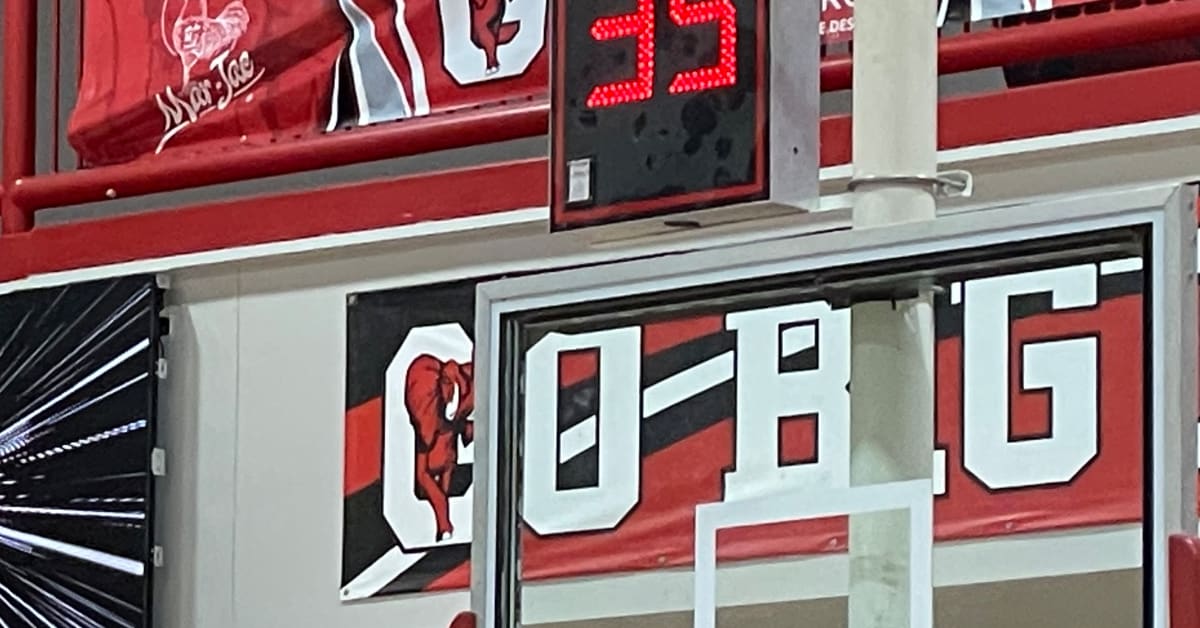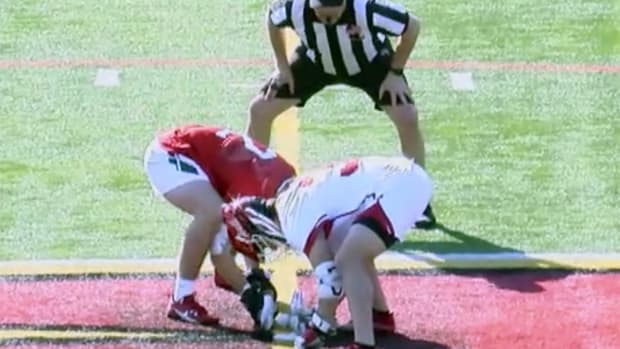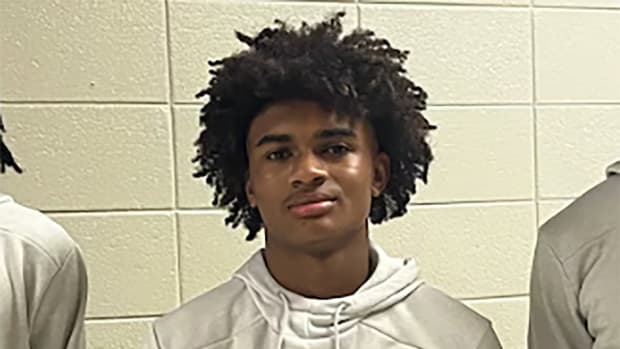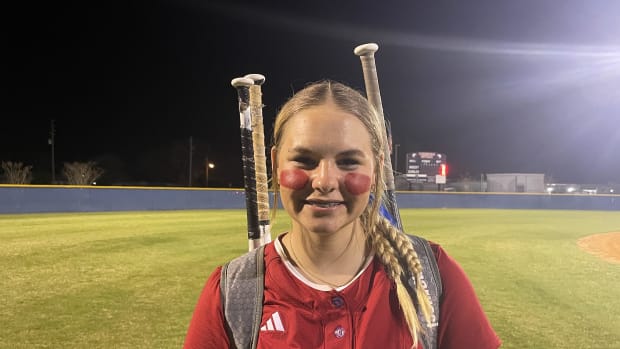
Measuring the shot clock's impact on Georgia high school basketball
In many ways, this high school basketball season has been just like pretty much any other in the state of Georgia.
There has, however, been one major difference.
When the season began back in November, it marked the official debut of a new era in which the Georgia High School Association brought its teams more into line with the college and pro versions of the game by implementing a 35-second shot clock.
With the 2022-23 campaign having passed its midway point and heading towards the completion of the regular season, and with the region and state tournaments on the horizon, one thing seems quite clear.
The implementation of the clock has had at least some impact on many different facets of the game.
Just what the exact nature of that impact and how big it has been really depends on who you ask.
For example, while it may be difficult to prove with any scientific certainty, there are some coaches who will tell you that the shot clock has had a positive impact on the pace of the game.
“I think it’s kind of hard to know for sure if it’s just a product of style of play or systems or the shot clock, but I feel like across the board, everyone has said one way, shape or form, just the flow of the game is better,” Norcross boys head coach Jesse McMillan said. “There’s a rhythm that teams can get into offensively and defensively. If a team wants to be deliberate, it can still do that. Defensively, the guys or girls know they can guard a certain amount of time and they can have some success.
“Then at the end of the game, it’s what we said from the beginning. You might play 28 or 29 minutes and the shot clock never comes into play at all. Then when it’s time to decide the game and it’s a five-point game or a six-point game, it comes into play and gives both teams the opportunity to execute down the stretch and decide the game.”
McMillan, who is in his 15th season as Norcross’ head coach and has led the Blue Devils to three of their six state championships, was one of several coaches who were driving forces to make Georgia one of 11 states throughout the nation currently playing with a shot clock, joining California, Maryland, Massachusetts, Minnesota, New York, North Dakota, Rhode Island, South Dakota, Utah and Washington. Oregon and Connecticut are set to become the 12th and 13th next season.
It’s a process that was several years in the making, including a phase-in period that included limited use of the clock in each of the past two seasons.
“I think the conversations started becoming real about five years ago when we started thinking about what it would take to implement it and how we can kind of plan for it. I did have a pretty significant role, but it wasn’t just me. It was a really healthy group of coaches around Georgia that talked out a lot of different scenarios and plans to kind of put it in place.
“Really, the impetus was the (Georgia) High School (Association), our relationship with (GHSA executive director) Dr. (Robin) Hines and (assistant executive director) Ernie Yarbrough had continued to grow, and they were supporting us on a lot of different things. And we were able to have some real conversations with them. They said, ‘Hey, if you can put a plan together that makes sense, they thought that the state would seriously consider it. So that’s kind of what got the wheels turning.”
The wheels have continued to turn throughout this season, leading to a variety of adjustments for teams throughout the state both on and off the court.
Some of those adjustments were logistical, having to do with purchasing, installing and operating the new clocks.
The good news is pretty much every issue that came up throughout the state has been gradually dealt with as the season has progressed.
“Most of the school districts at the county level, they took the lead in buying the clocks and installing them,” McMillan said. “So, it really wasn’t a situation in which each school was responsible for it. So that helped because everything was kind of universal, especially when you talk about the metro (Atlanta school) systems, the metro counties.
“I feel like halfway through this season (in which) everybody has it, the issues have been few and far between. I really haven’t heard where anyone that has had consistent issues with it. And the referees do a great job.
The on the court issues have varied for different teams.
For some like the girls team at Chestatee, a team from Hall County which came into Tuesday’s Region 8-4A game at East Hall at 16-6, it really hasn’t had much of an effect.
“We really don’t talk about it very much,” Chestatee girls coach Sutton Shirley said. “It has not affected us. I think other teams, it’s affected a lot more. We play so fast that it hasn’t really been a big deal.
“We have put in some zone stuff (defensively). I’m going to play man-to-man 99 percent of the time, but we played a lot more zone (Jan. 10 at Cherokee Bluff) then we normally ever do. But because of the shot clock, it helped us because it put them some bad situations, and we did a pretty good job of defending 25 or 30 seconds.”
Other teams have had much tougher times adjusting to the clock due to talent level, style of play or both.
Dani Wright has been in both situations, having coached for three seasons each at Gwinnett County girls powers Norcross and Archer before taking the head coaching job at Gilmer in the north Georgia mountains this season.
And she acknowledges that it is has been a factor in her first season as the Bobcats’ head coach, though she points out that it’s only one of several.
“It really doesn’t affect … the transition teams, the get it and go teams in the fast-paced games,” Wright said. “If you look at where I am now (Gilmer), it is a factor. We play a little bit slower here trying to get into the adjustment and teaching the transition, too.
“I don’t know if we’ve had too many shot clock violations. We’ve had a few. I’ve had more here than at Archer (or Norcross), put it that way. It’s just a different style, different pace of where you’re at.”
A big issue for Wright is the fact that there is no shot clock on the sub-varsity level, which can lead to some major adjustments for players called up to the varsity squad during or following the completion of the junior varsity season.
“It is (a big adjustment),” Wright said. “We pulled up two JV players about midseason, and they had to relearn and adjust going into that shot clock. They’ve never had that. They knew that they would work (the ball) around and look for a great shot rather than (just) trying to get (any shot) up.”
Despite all these issues, and the possibility that metro Atlanta area schools started out with a bit of an advantage thanks to more resources that gave them more exposure to the clock during the phase-in years, McMillan says he’s heard few complaints from his coaching colleagues.
And with the style of play having already shifted towards a faster pace across the board, he believes the scales will balance throughout the state the more games teams play with the clock.
“Most of the teams in metro Atlanta have played with it a lot at this point because a lot of the teams had it (the last two years),” McMillan said. “I would agree that 35 seconds is still a very long time in terms of basketball, and you really do have to have a very deliberate system in place to consistently be on the back end of that clock.
“Most teams are going to push in transition when they can and run an action. Having 35 seconds is a very long time to in regards to basketball and the way it’s played these days. … Really the only time it’s come into play consistently is a situation where there’s a loose ball or a foul, and it’s a short clock. Outside of that, if you get your full 35, I feel like offensively, you have plenty of time to execute and do what you want.”





